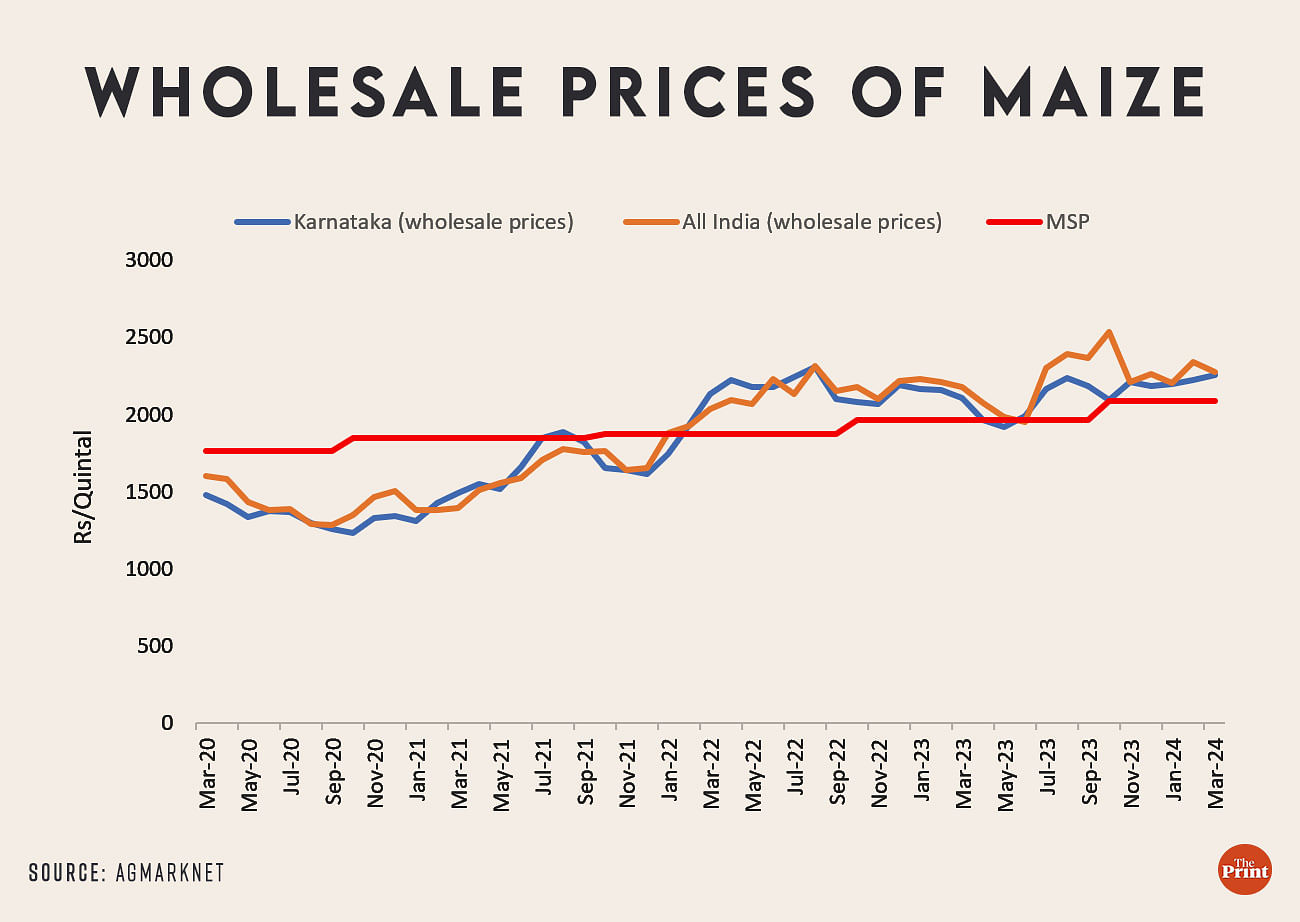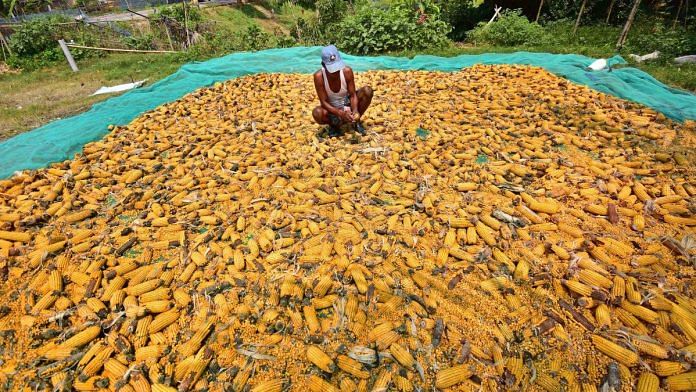It seems that the government has realised that allocating rice for ethanol from central pool stocks of the Food Corporation of India is not a good policy choice. The rice stock on 1 January 2024 was 51.64 million tonnes. This includes 18.17 mt rice already in stock and 33.47 mt rice, which was yet to be delivered against un-milled paddy. The buffer norm for 1 January is only 7.6 million tonnes.
During Covid-19, the government used excessive stock of wheat and rice in a prudent manner and provided an additional 5 kg of food grains per month person.
In the last two years, due to low procurement of wheat, the government has reduced allocation of wheat, and it has been allotting rice even in wheat eating states.
In ethanol supply years (December – November) 2021-22 and 2022-23, 1.02 mt and 1.30 mt rice was issued respectively to distilleries from the central pool stock to produce ethanol. This was given at a price of Rs 2,000 per quintal. The price for bulk buyers under the open market sale scheme (OMSS) was Rs 3,100 per quintal.
Going forward, we can expect that excessive stock of rice in the central pool will not be given for ethanol. It is a wise policy in a period of uncertainty over the impact of climate change on agricultural production.
Also read: Bananas are India’s horticulture success story. Time to up the game in international markets
Feed stock for ethanol
Sugarcane will continue to be the major feed stock for ethanol. Additionally, maize is now considered by both the government and industry as an important source of feed for ethanol.
At the Maize and Millet Summit held in Gurugram in March 2024, when I mentioned that the production of maize in 2022-23 was 38 mt as per the government’s final estimate, industry leaders looked amused. Their estimate of production was only about 32-34 mt.
Wholesale prices of maize have been ruling high (graph below) despite record high production of maize in 2022-23. It is rather puzzling.

In a study published in 2022, my colleagues and I had examined the availability of maize for production of ethanol. Our study projected various scenarios until 2025-26 and found that in the best-case scenario, 10.1 billion litres of ethanol would be available from all sources out of which 8.4 billion litres would come from sugarcane, 1.62 billion litres from rice and only 0.11 billion litres from maize.
We had also projected that out of total production of 10.1 billion litres, 8.1 billion litres of ethanol will be available for blending of petrol and 2 billion litres will be used for other purposes. At these levels, a blending of 16 per cent would be achieved in 2025-26.
In ethanol supply year 2022-23, only 197.6 million litres of ethanol was produced from maize. This was just about 5 per cent of ethanol production.
Also read: Sale of wheat, rice in open market needs better targeting. Bangladesh model worked
Production and uses of maize
Maize is considered an ideal agricultural produce for manufacture of ethanol. In the United States of America, about one third of maize production, about 389 mt, is used for ethanol. This was 72 per cent of their biofuel blending requirement of 79.3 billion litres by volume in 2023.
As per the projections in NITI Aayog’s roadmap, out of the requirement of 10.16 billion litres of ethanol, 54 per cent was to come from sugarcane and the remaining about 46 per cent from foodgrains. E20 blending is projected to save about $ 4 billion per annum. However, the NITI Aayog roadmap did not detail the specific quantity of rice or maize, which would be used for ethanol.
The poultry feed industry is the largest consumer of maize, using about 60 per cent of the maize produced. Out of about 35 mt of maize production, the poultry sector takes about 21 million tonnes. Starch companies and breweries are estimated to use about 10 mt of maize and only about 2 mt goes for direct human consumption.
The oil marketing companies (OMCs) have announced an additional incentive of Rs 5.79 per litre for ethanol from maize and other grains. Thus, the grain-based distilleries will receive Rs 71.86 per litre for ethanol. These distilleries were earlier supplying ethanol to nearby depots of OMCs. Now due to a recent policy change, the OMCs are asking distilleries to transport ethanol over long distances, thus affecting their viability.
Due to non-availability of rice for ethanol, the grain-based distilleries will be forced to purchase maize from the open market, which will hopefully deliver MSP to farmers but severely hit the poultry industry. The cost of eggs and chicken is then likely to rise. Its impact on nutrition is not yet estimated.
According to an expert estimate, 16.5 mt of maize, a little less than half of India’s production, may be required for ethanol by 2025 if 20 per cent blending has to be achieved. This is clearly not possible unless production goes up substantially. For this, single cross hybrid with Fall Armyworm-resistant biotech traits may be necessary.
Only about 30 per cent of maize is under irrigation and the yield is just about 3.4 tonnes per hectare. The yield in rabi crop is however higher at 4.4 tonnes per ha. In some regions of Bihar, the yield of rabi crop is as high as seven to eight tonnes per ha.
Also read: Poultry and chicken keep food inflation low. Time India’s policymakers promoted it
MSP procurement of maize
There are suggestions for the government to procure maize at MSP for supply to ethanol distilleries. From 2010-11 to 2017-18, maize was procured at MSP, and it was disposed of through tenders by FCI. The government incurred losses during this period, and the state governments were reimbursed. The same story will be repeated if the government decides to procure maize for ethanol. Moreover, poultry industry will also make a similar demand.
This would be another wrong policy choice, which will distort maize production like how government policies have affected sugarcane and rice.
Siraj Hussain is a former Union Agriculture Secretary. Views are personal.
(Edited by Theres Sudeep)



